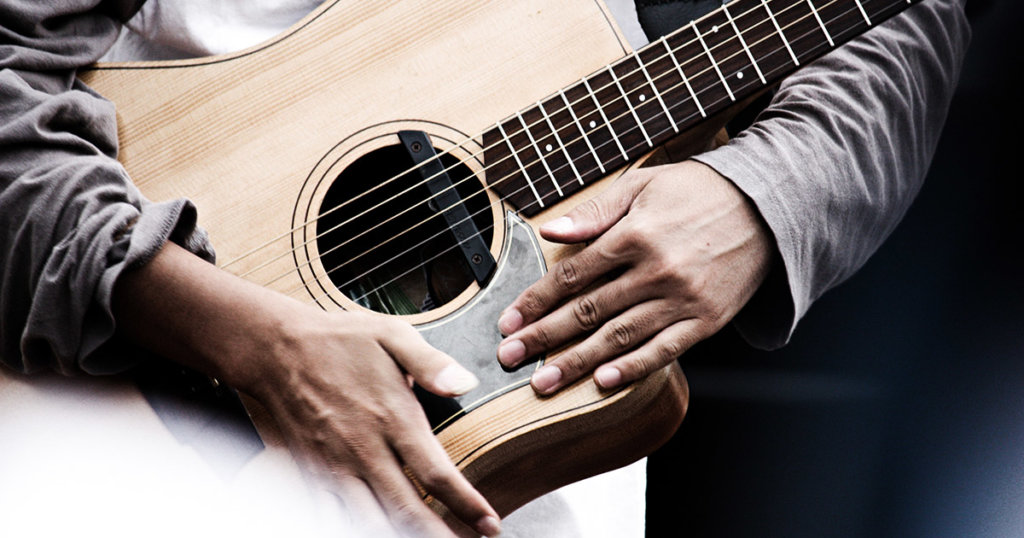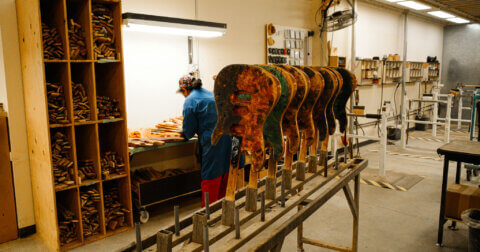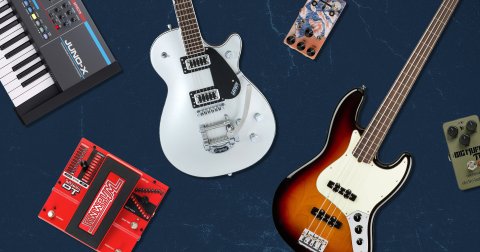The introduction of electric guitars in the 50s didn’t spell the end for the acoustic guitar. Far from it. The sounds of the acoustic guitar were just as popular, and they too, benefitted from the electrification and amplification of stringed instruments. Gibson realised the acoustic guitar was going nowhere and couldn’t help but retrofit their P90 pickups onto their flat top guitars. They proved to be right, with a certain J-160E making many appearances at live performances and most famously, on the bed of a Hilton Hotel room in Amsterdam.

John Lennon’s Gibson J-160E. It featured a P90 pickup with volume and tone controls.
Before the acoustic guitar takes the stage, we’ve got to talk about pickups – the source which translates the guitar’s vibrations and sounds into the electronic signal to be amplified.
Many acoustic manufacturers such as Gibson and Taylor do sell guitars that come with built-in pickups and electronics. If you know you’d need an acoustic guitar in a live setting, these guitars with built-in pickup systems are usually the first to look out for. But if you have a favourite guitar that doesn’t have a pickup, you’re back in the familiar spot of picking the right tool for the job.
So here’s a quick guide to the choices you have when you’re looking for an acoustic pickup.
Undersaddle pickups
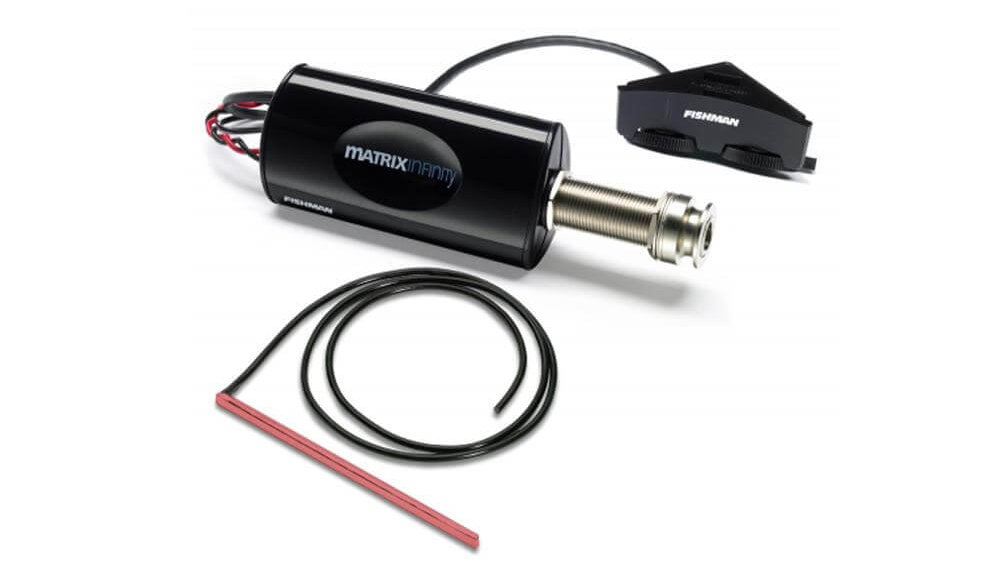 The most common choice of pickups on acoustic guitars, undersaddle pickups are exactly what their name implies. A thin strip of six piezoelectric crystals sits underneath the guitar’s saddle, senses the pressure from the vibrating strings and translates them into an electric signal.
The most common choice of pickups on acoustic guitars, undersaddle pickups are exactly what their name implies. A thin strip of six piezoelectric crystals sits underneath the guitar’s saddle, senses the pressure from the vibrating strings and translates them into an electric signal.
Undersaddle pickups usually sound brighter and thinner as the pickup is mounted at the end of the strings. They also produce very low output and require an additional preamp to be installed to boost the original signal. Despite the somewhat undesirable tone, undersaddle pickups are extremely popular because they perform brilliantly on the stage. They allow players to play at much louder volume without nasty feedback, and the treble and midrange forward tone cuts through the mix and without getting lost.
Best for: Players in a band with a need to cut through a busy mix.
Magnetic pickups
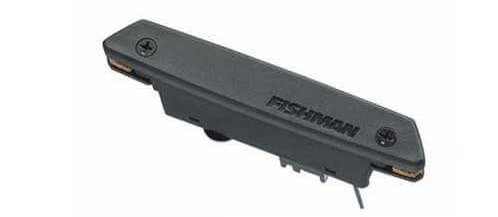 Using the same technology as the pickups in electric guitars, magnetic pickups are usually mounted above the soundhole of the guitar, picking up the vibrations of the strings.
Using the same technology as the pickups in electric guitars, magnetic pickups are usually mounted above the soundhole of the guitar, picking up the vibrations of the strings.
Unsurprisingly, the tone is quite similar to that of an electric guitar. Expect great clarity, note separation and balance from magnetic soundhole pickups. But, like undersaddle pickups, it does not pick up body vibrations, and can lack the woody and warm characteristics we expect of acoustic guitars.
Most magnetic pickups are easy to install. The pickup sits on the soundhole and can sometimes have a wire dangling on the outside of the guitar. If you seek a more permanent solution, the wire can be routed inside the guitar.
Best for: Owners of vintage guitars or any other guitars that are too valuable or fragile to permanently install pickups on.
Soundboard transducer pickups
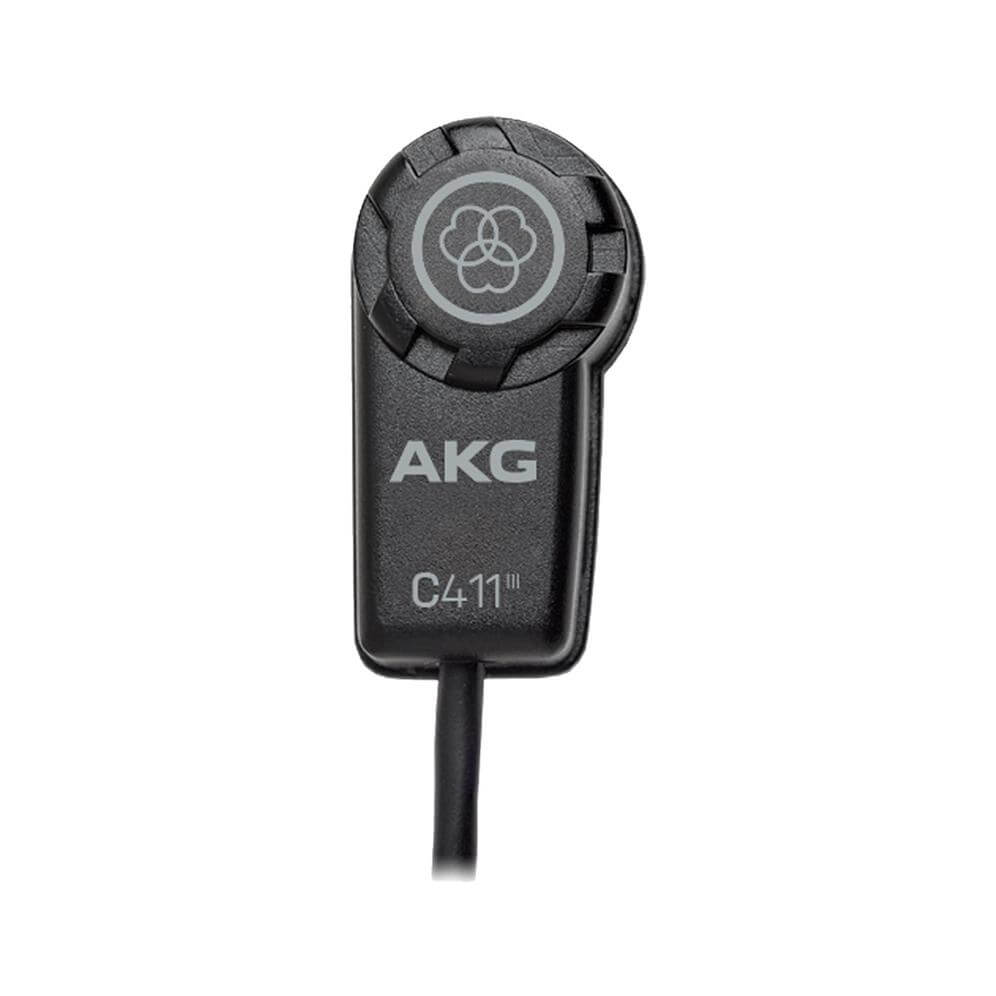 The other piezo system pickup, these are sometimes known as contact pickups. They’re similar to undersaddle pickups, except they can be placed anywhere – under the bridge, inside or outside the body.
The other piezo system pickup, these are sometimes known as contact pickups. They’re similar to undersaddle pickups, except they can be placed anywhere – under the bridge, inside or outside the body.
The pickups work by picking up the vibrations of both the strings and the body of the guitar. This means the natural acoustic qualities of the guitar is preserved, producing a rich and warm tone that is faithful to the unplugged sound.
Because it picks up string and body vibrations, soundboard pickups tend to feedback more easily at louder volumes than their counterparts, making them challenging to dial in when used in a band setting.
Best for: Solo players, especially those who incorporate percussive elements into their playing.
Microphones
Condenser microphones are what you’d find in a studio when you want to record your acoustic guitar. To adapt a similar setup for the live stage, a tiny condenser microphone is placed inside the body of the guitar, capturing all the nuances of the strings and body.
In terms of sound, microphone systems top its class, producing a natural and realistic tone. But like most microphones, they are prone to unwanted feedback.
Blended systems
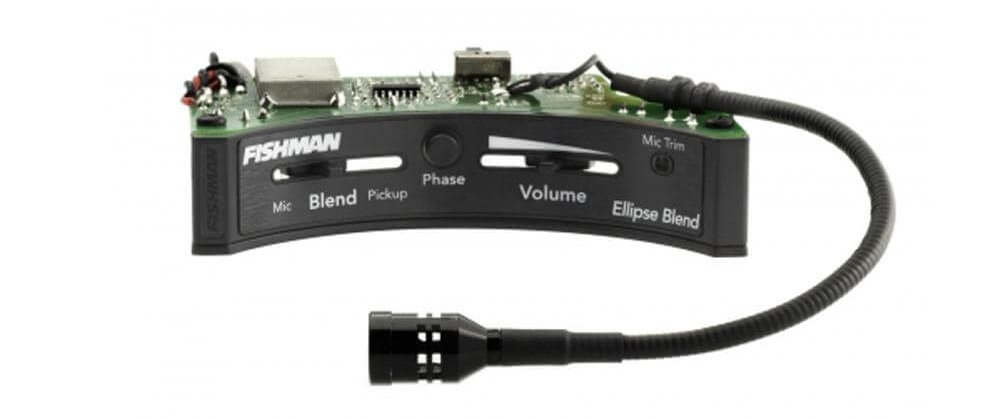 Microphones are seldom used alone for the reasons above. They are usually paired with another pickup source, such as an undersaddle pickup, combining the best of both worlds, and canceling out each other’s weaknesses.
Microphones are seldom used alone for the reasons above. They are usually paired with another pickup source, such as an undersaddle pickup, combining the best of both worlds, and canceling out each other’s weaknesses.
Best for: Players who need the full range of sound from their guitar.
[the_ad id=”2574″][the_ad id=”2577″]
Swee Lee stocks a wide range of acoustic pickups from brands like Fishman, LR Baggs and more. Shop them online here, or drop by our flagship store at The Star Vista to check them out in person.
